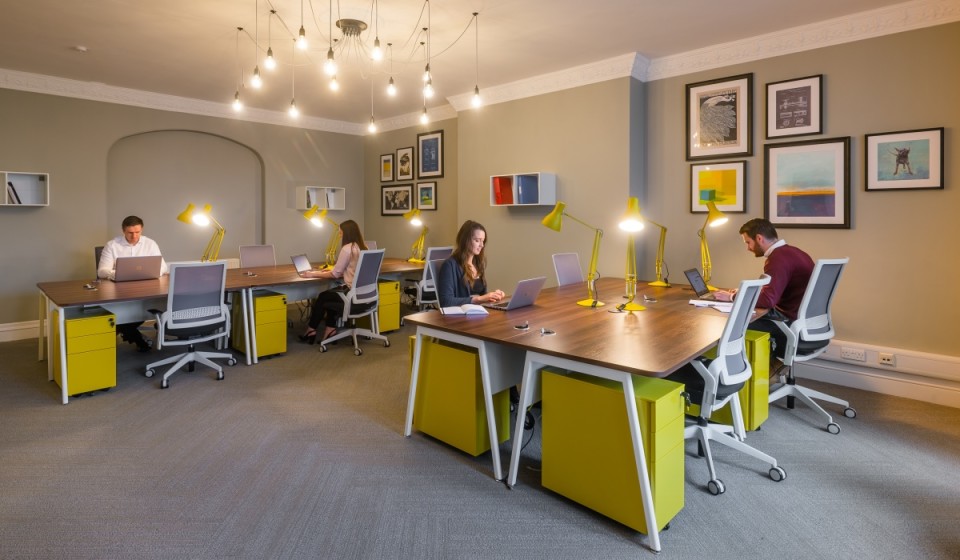Psychology & office design: How new generations are shaping the places they work
By Bruntwood

More than ever before, offices are being built with great consideration given to how the design will positively impact employees and the way in which they work.
Office space is a factor of business that many employers have, in the past, placed little significance on. If it’s cheap, in a good location and big enough for the workforce it was fine. Design hasn't always been a decisive element.
But the design of an office is becoming increasingly more important. According to Kelby Ergo Design (KED), almost 90 per cent of a person's time is spent indoors, and those employed outside of the home spend 33 per cent of their waking hours at their workplace.
At a time when the UK is experiencing a mental health crisis - one in four young women in UK have reported mental health problems, according to the Office for National Statistics - the wellbeing of employees should be a consideration of all businesses and employers. The physical and social aspects of an office can have a massive impact on the wellbeing of a person's health and poor working conditions can cause low performance, increased error rates, injuries and absences.
The psychology behind office design should consider the physical and mental effects it may have on its workers. Here, we take a look in a little more detail.
Design-thinking
Whether you’re a multi-million pound corporation or a small tech start-up, the slightest change in office design can boost productivity and help retain the best talent. Businesses across the UK are now opting for well-designed offices over cheap commercial space, because in the long-run, they can find themselves making great savings.
To cater to the demand of these new, digital and well-designed offices, there has been a shift in thinking by designers. This means considering things like; high-tech sensors that monitor environmental conditions like temperature, odours and sounds, break out areas for workers to relax, and office exercise classes like yoga to build on employees' emotional and physical wellbeing.
With the popularity and availability of wearable technology, biometric sensors are also able to provide employees with an insight into stress, boredom, poor posture and too much time spent in front of a screen. Moving into the future, the advancement of technology opens up the possibility of sensors that monitor emotions, heart rate and brain waves being introduced within the office.
A home-away-from-home
The traditional corporate office is becoming a thing of the past, with many businesses even adopting a home-away-from-home environment, where employees can work in a space where they feel comfortable. According to Tim Harford, economist and author of "The Undercover Economist", a tidy workspace isn't necessarily an effective one. He argues that it is not always the minimalism or the cluttered nature of a space that affects productivity, instead employees respond well to being given a choice about what to do with the spaces they work in.
When working in an office that is less formal and more comfortable, employees are likely to spend more time there because they don’t feel trapped. Bruntwood’s Whitehouse building plays on this home-away-from-home notion, recently having been refurbished to mimic the design of a residential property.
Not only this, many workers are also no longer having to spend hours sat behind a desk. Numerous companies are giving their employees the freedom to decide when and how they work, and as a result, they are happier, more productive, and view their employer as more innovative than competitors. This introduction of flexibility also means that the traditional 9-5 office hours are altering, and employees are working round their lifestyle, at times that suit them.
An experience
Millennials and Generation Z are quickly emerging in businesses across the globe, and their new attitude towards work means that office design is one of their most prevalent considerations. Unlike previous generations, the younger workforce are placing a high value on work-life balance, as they see their jobs as more of an experience, rather than something that just pays the bills.
With technology comes the ability to access emails, phone calls and work 24/7. Instead of separating work from personal life, offices are now focusing on how they integrate the two, by making the space as comfortable as possible.
As we move into the future, the possibilities for office design are endless. While no one can be sure of what the future may bring, what is certain is that the days of work cubicles, clinical settings and uncomfortable offices are being left behind.
Find out how we can help provide you with a great space where your business and your employees can thrive by visiting us at Prolific North Live this year. We're on stand 135, next to the keynote theatre.
Stay Connected!
Sign up to our newsletter for the latest news, updates and offers.